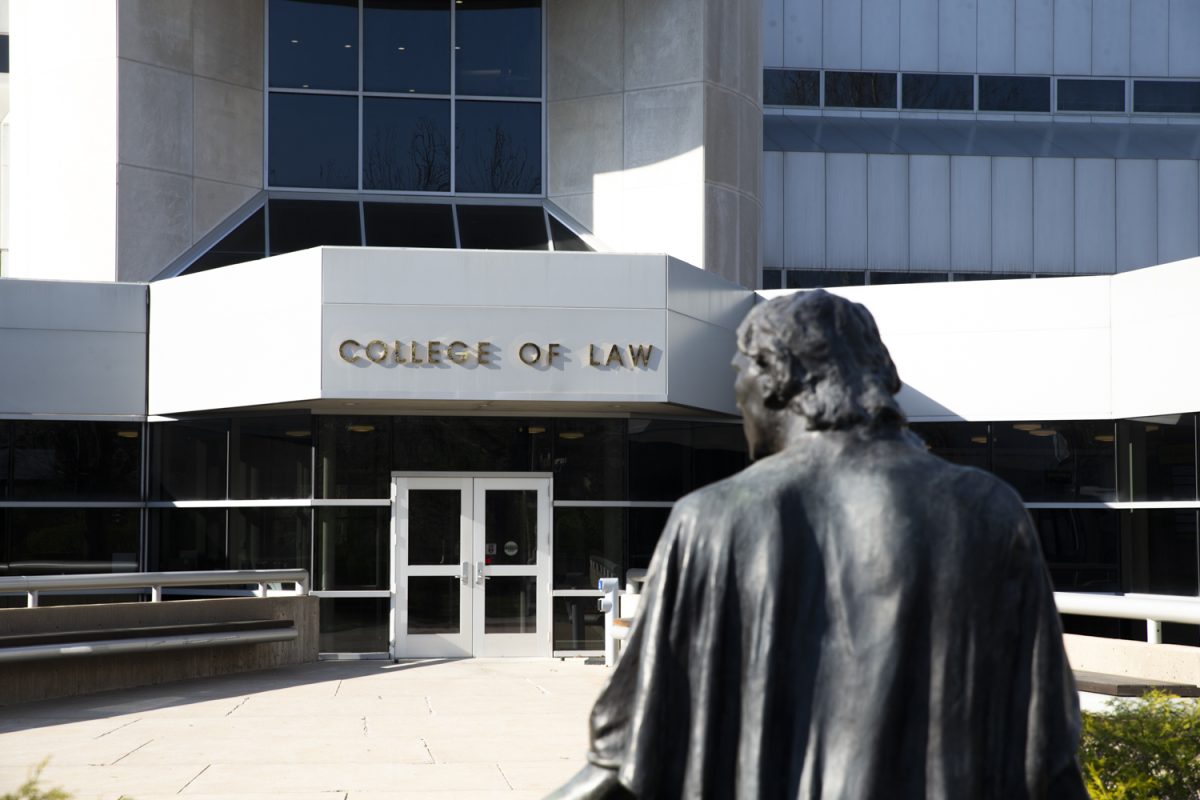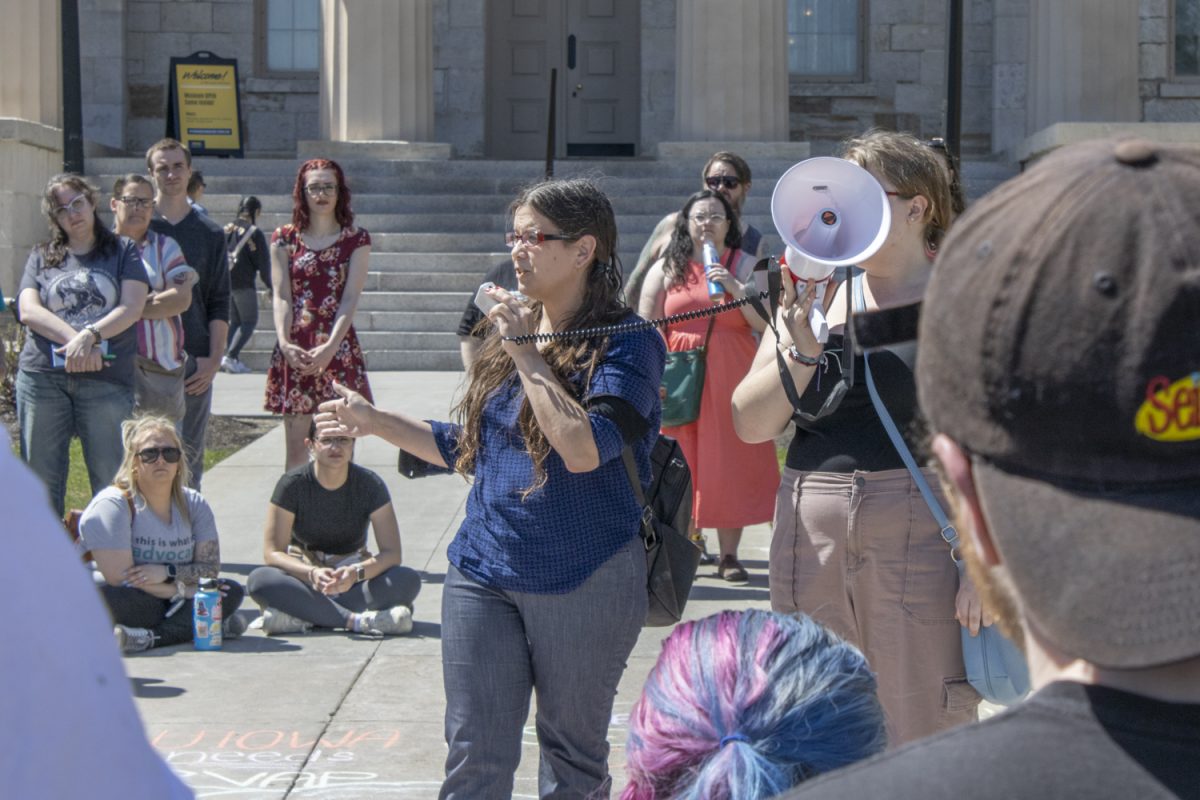Researchers presented around a dozen projects centered on flood mitigation Monday, and each presented unique results that could play a role in Iowa City’s and the UI’s future.
As part of the flood commemoration, they set their slick posters propped up against the white interior of the Old Capitol.
Kevin Denn, a UI graduate student, presented a study Monday morning; he spent Monday night in his car, waiting for another flood in Cedar Rapids.
“I’ll probably be sitting in my car waiting for the water to rise tonight,” he said.
Denn is already working on his second project, but he showcased his first one on Monday. He arrived at the UI only two weeks before the flood hit and didn’t start the project until around two months afterwards.
By determining sources of sediments carried and deposited throughout Cedar Rapids — and tracing their path — he and his fellow researchers hope to develop models for future disasters. He worked under Keri Hornbuckle and Athanasios Papanicolaou of the UI civil and environmental engineering and the UI hydroscience institute on the project.
The researchers ran into two main obstacles. The sediment wasn’t “fresh,” Denn said. Because they began to seek funding after the flood, the length of time between the flood and their sampling made data more difficult to analyze.
Denn said he is now working to test the results of the previous data. He is waiting for a creek in Cedar Rapids to flood in order to test the results on a smaller stream and study and correlation between the two.
Hydroscientist Marian Muste and a doctoral student Howard Ho were at the event to publicize their research.
“A flood is exciting for a hydrologist, of course,” Muste said.
Their project helped to develop a new method of technology — which has been in the works for more than a decade — so that more people can measure flood predictions of water discharge more accurately, easily, and cheaply.
Ho went out on a bridge during the flood each day and took video footage of a certain area, sometimes twice a day.
“Most people were heading away from the flooding because of the possible danger, but I was heading right into it to get the images,” Ho said. “But I didn’t think about the dangers at the time. I was excited to do the research.”
Using software they developed themselves, they determined the predicted water discharge. They created a new process to create a curve unique to each place of measurement.
No two areas are the same, they said.
Ho, who is from Taiwan, wants to take his knowledge back to his native country to help them save more money on flood predicting.
Peter Thorne of the UI occupational and environmental health department led another team of researchers looking for molds, allergens, lead, and asbestos in Cedar Rapids homes.
They aim to develop guidelines for safe reoccupation of flood-damaged homes.
Funded by the National Institutes of Health, the team conducted indoor air tests to monitor those flood-related health hazards. It was a collaborative effort with the county health officials, UI graduate students in public health, and AmeriCorps volunteers.
The challenge lay in getting permission. Kimberly Hoppe, a UI doctoral student who worked on the project, said they needed consent and gave out questionnaires before they could go into people’s homes. They also had to get approval from a UI review board.
It took the researchers around six months to finish the gathering data, but they are still waiting on analyses and have to write up the results.
“It was a long project, but I think the implications will end up being helpful,” Hoppe said.






